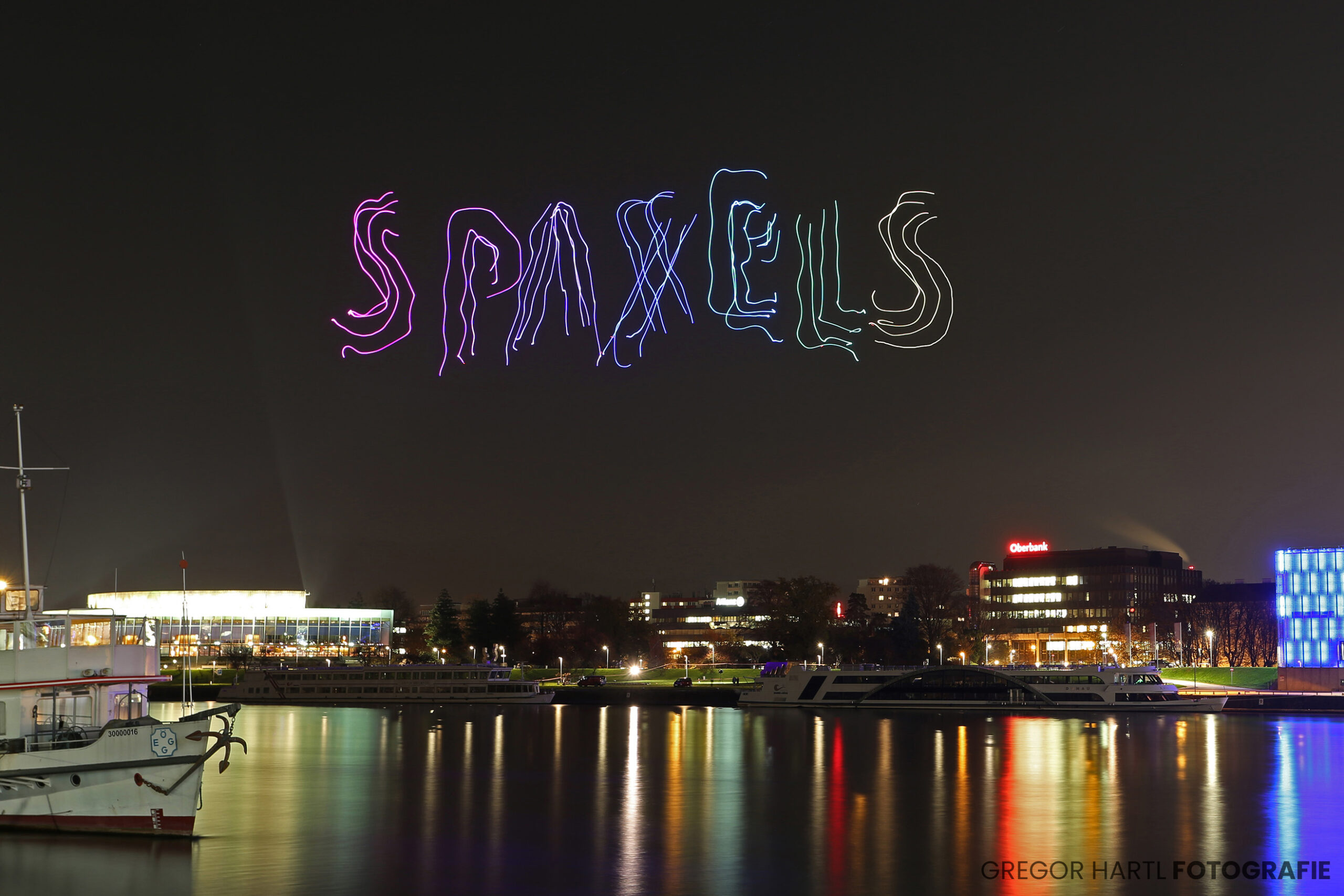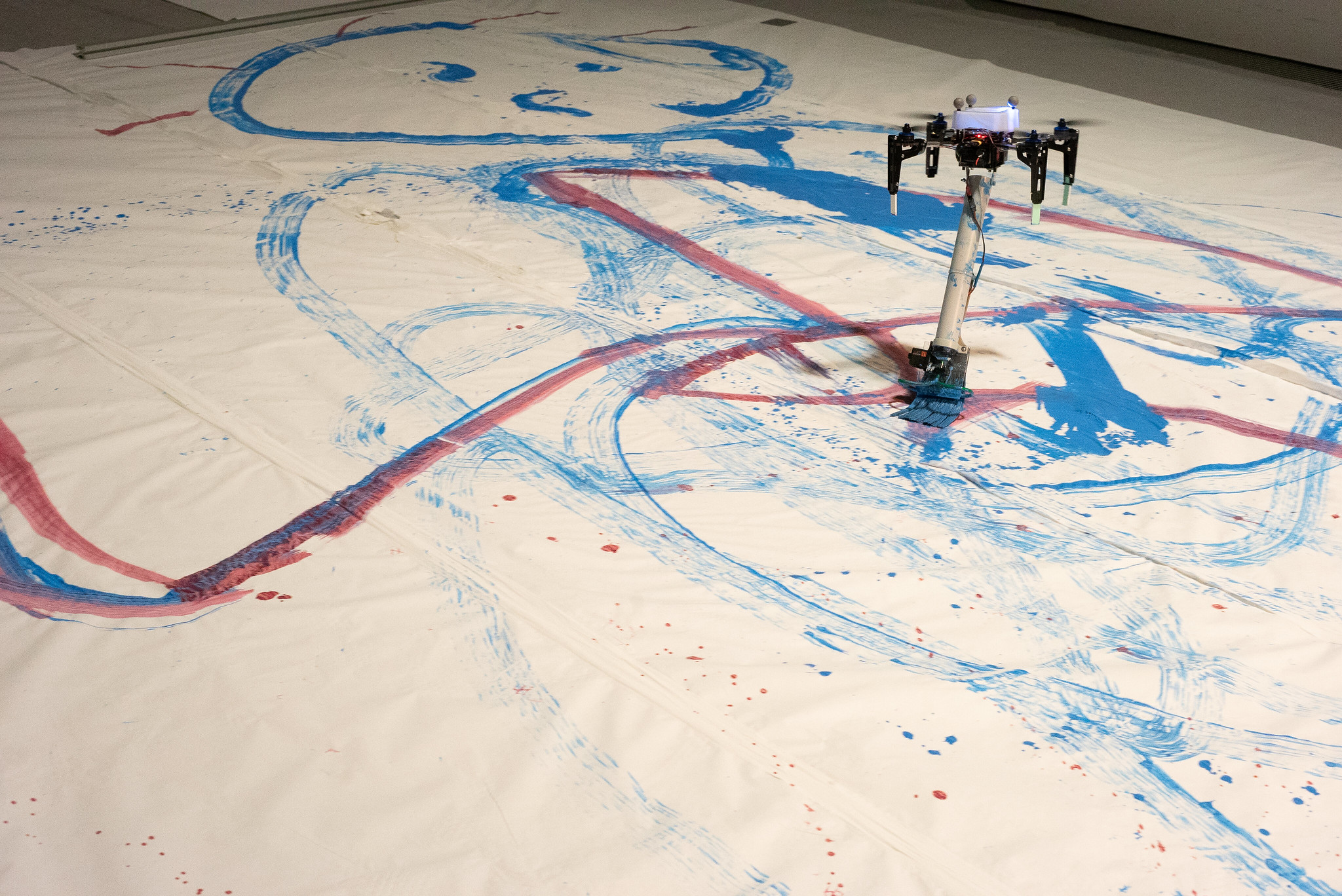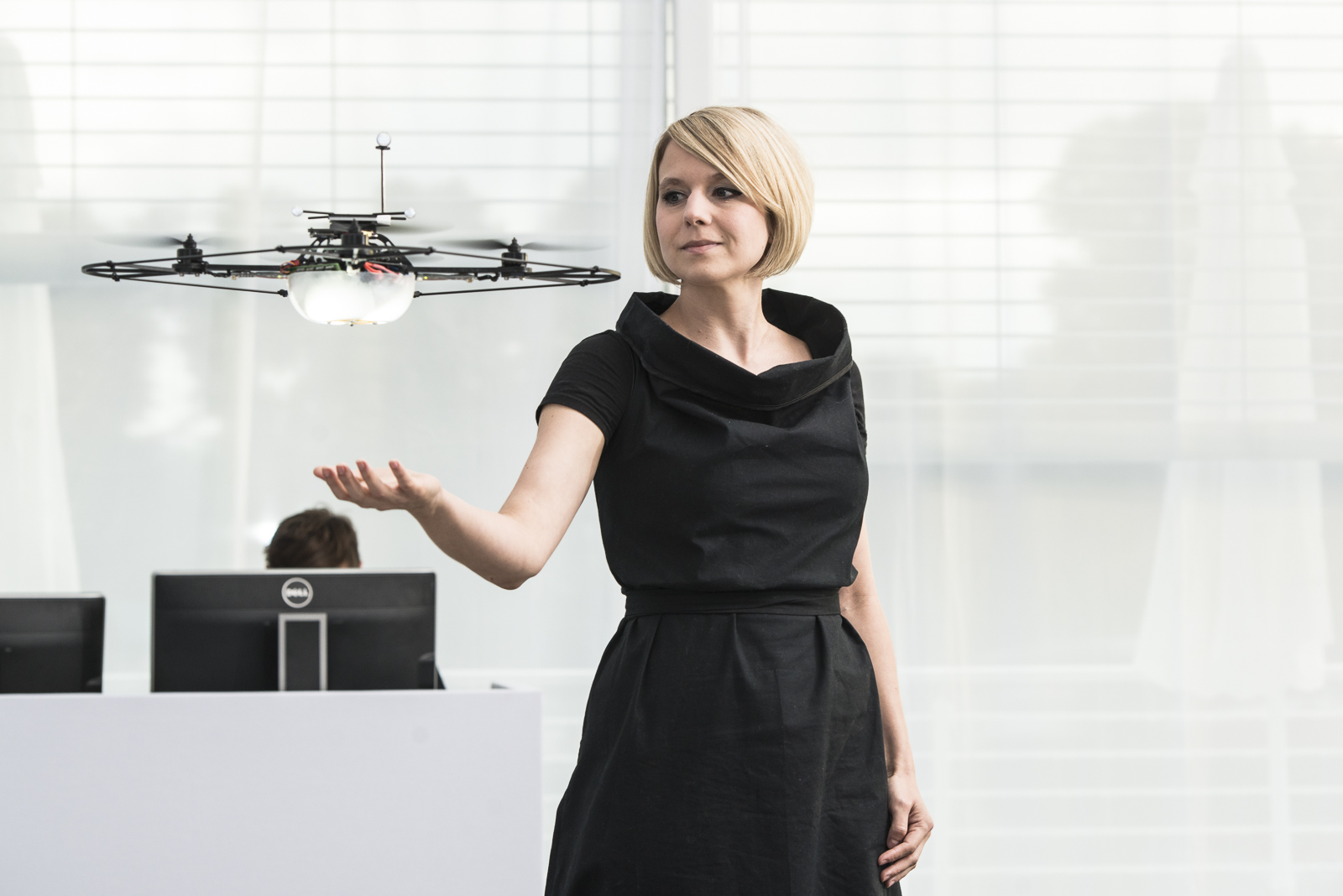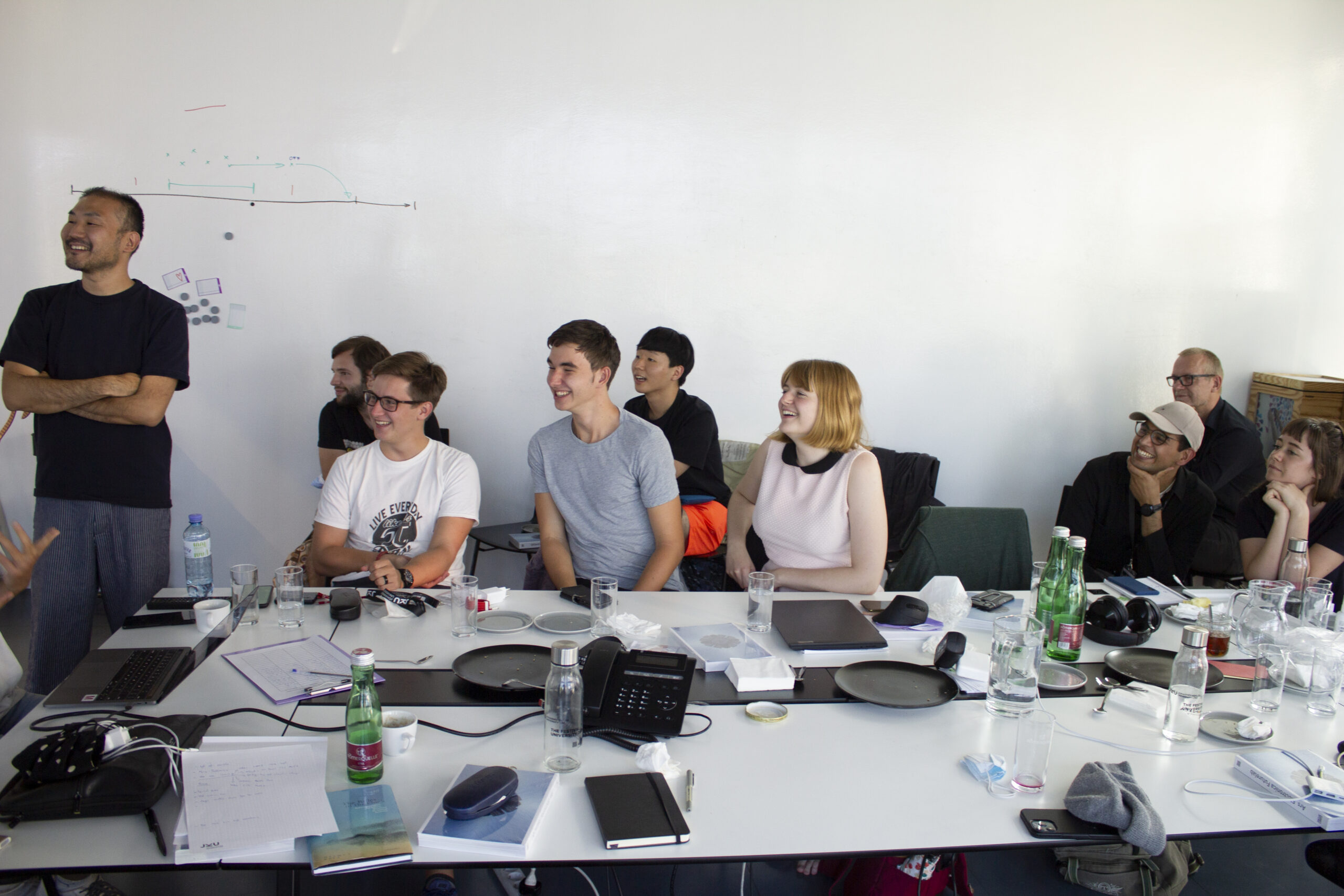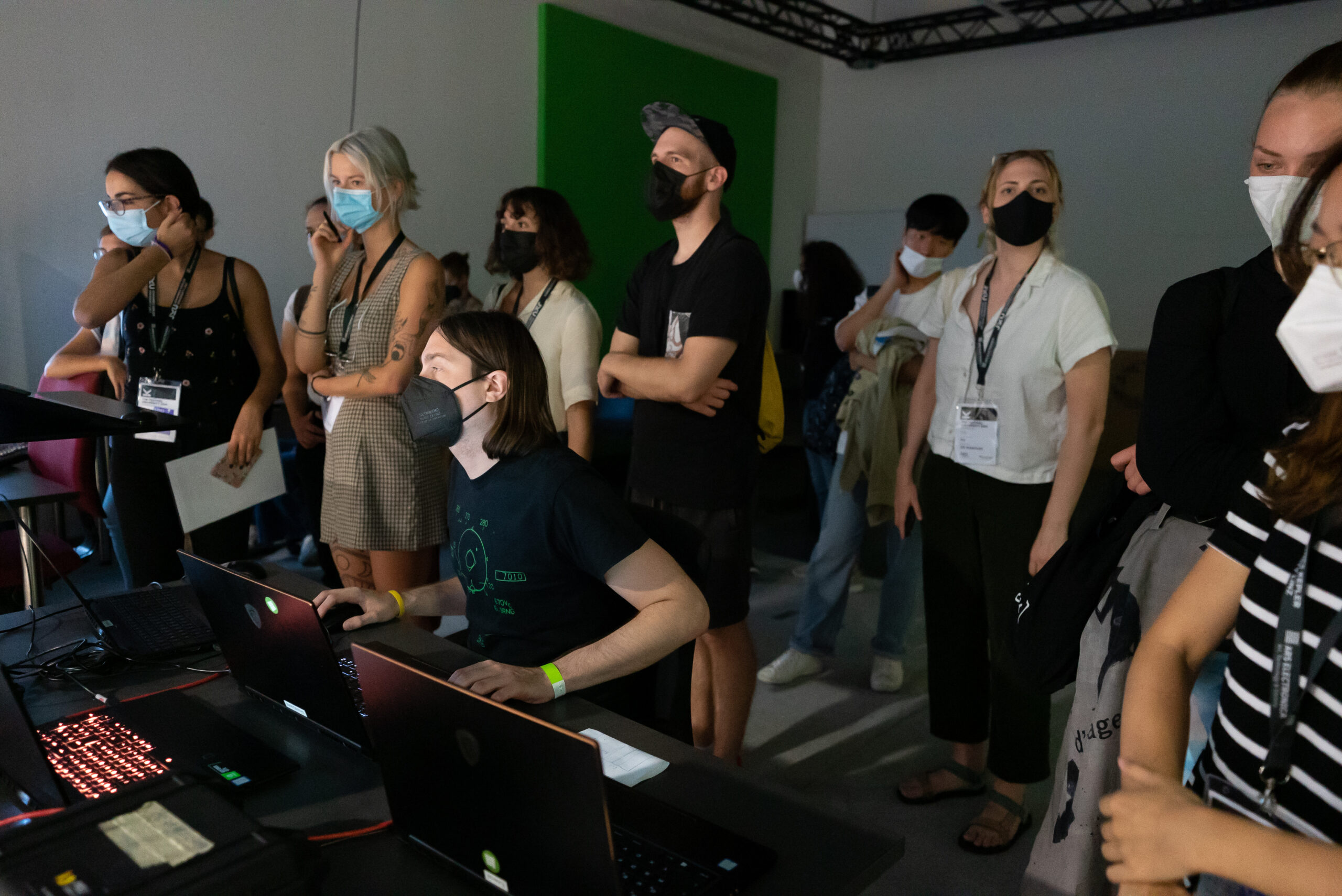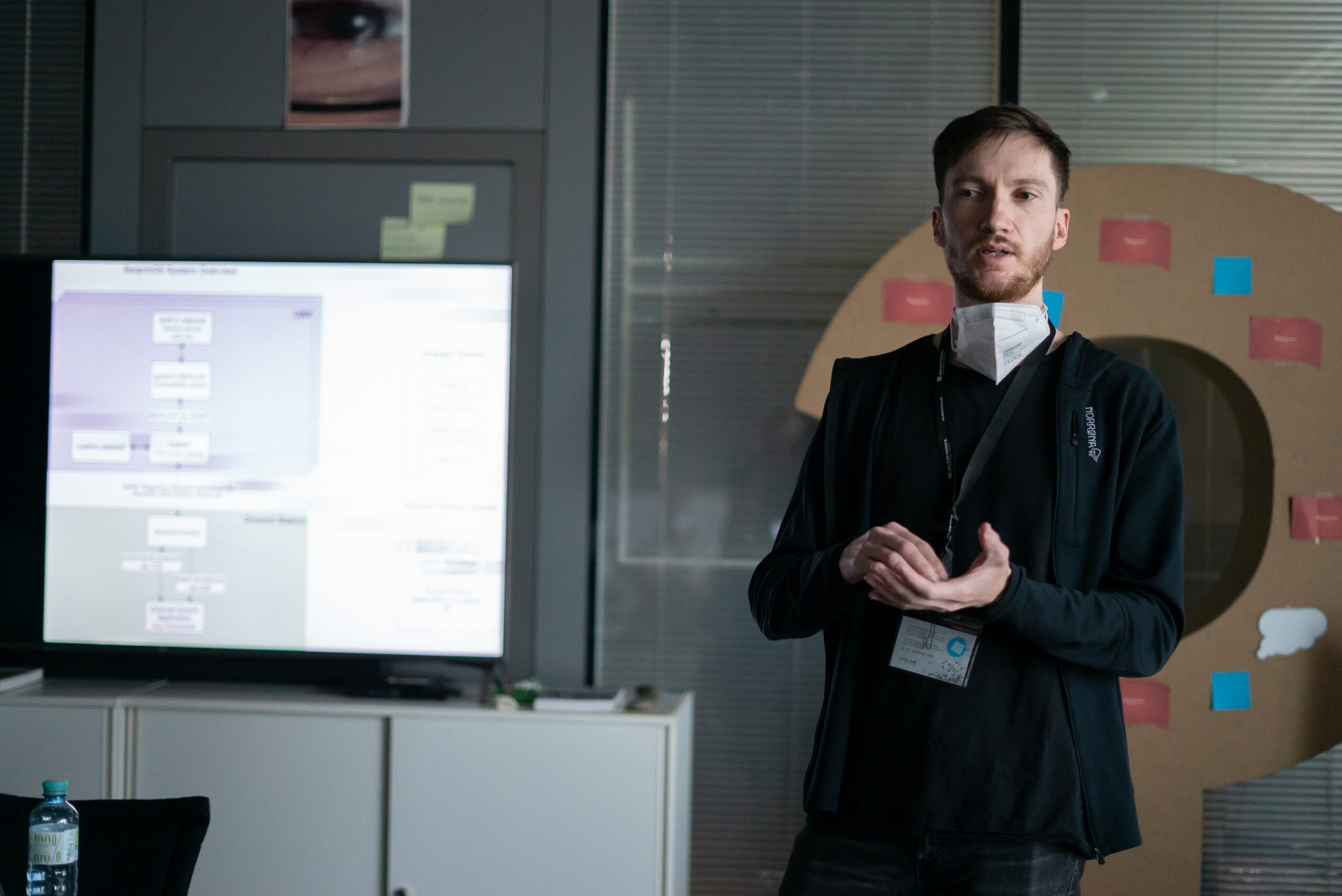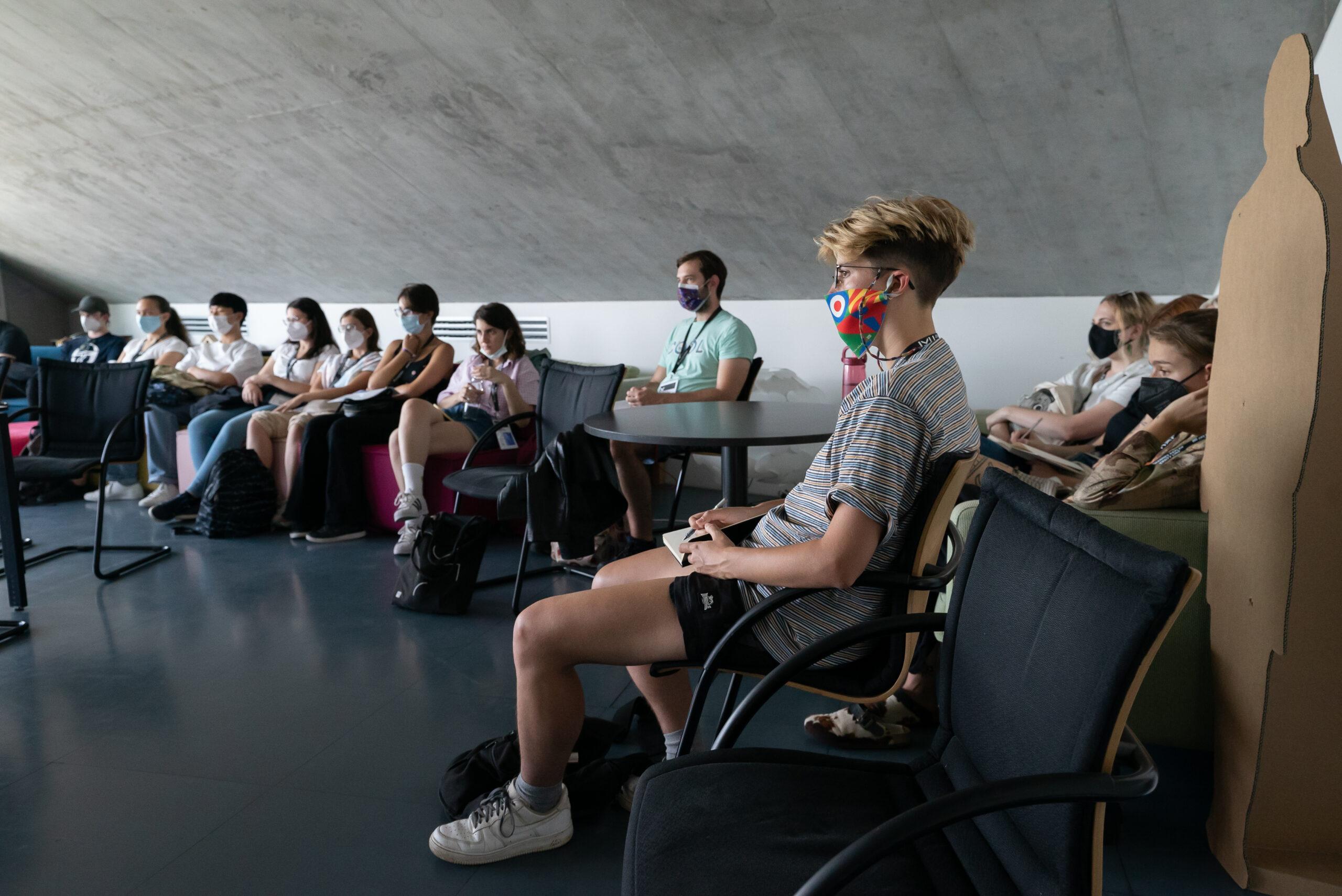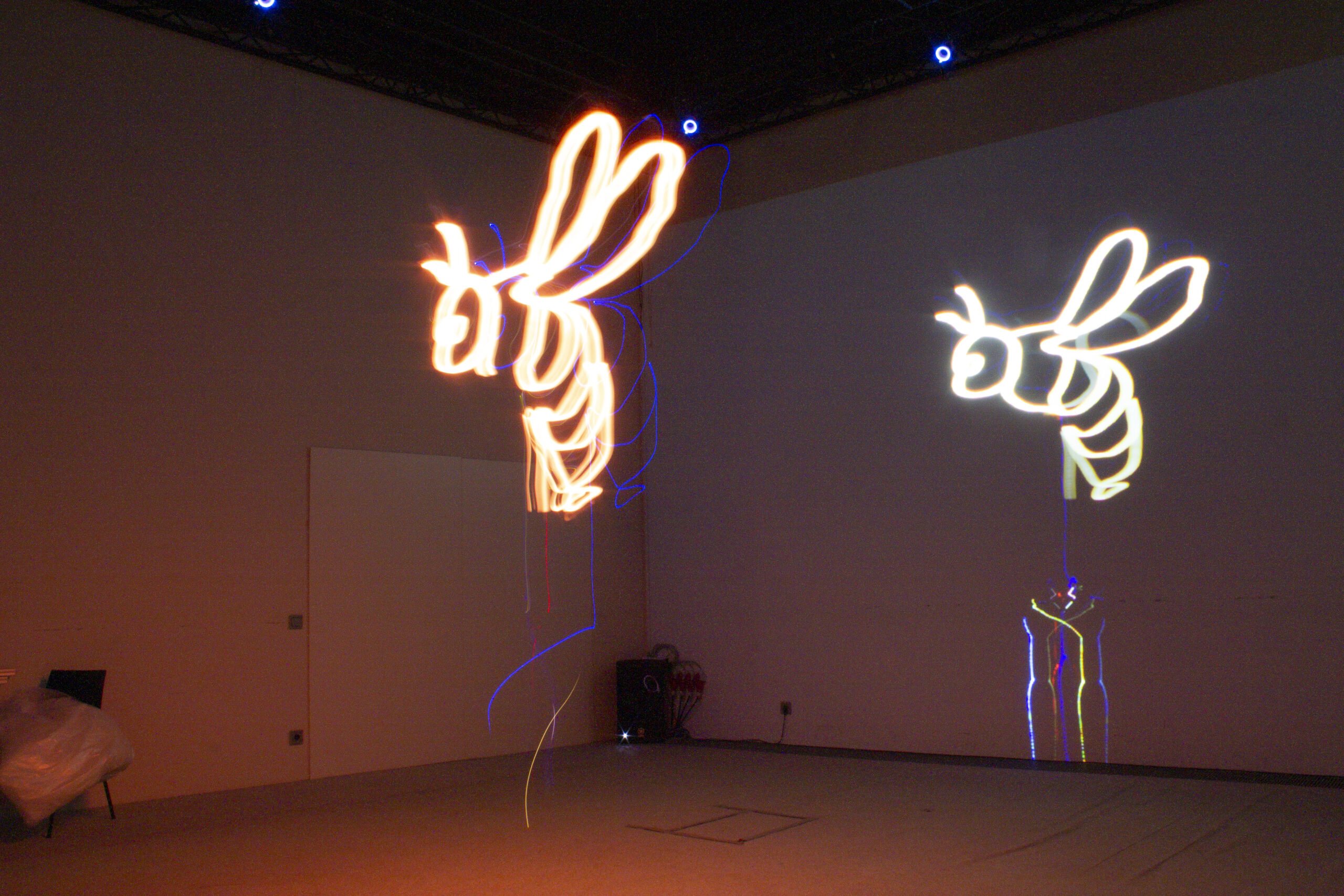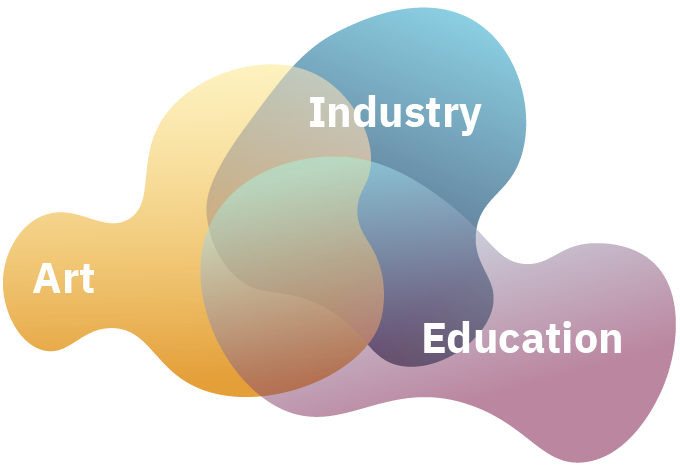
Art
Spaxels are Pixels in Space. In 2012, the Spaxels, as a world premiere of an LED-equipped outdoor drone swarm, pushed the idea of Swarms Art into three-dimensional reality and helped create the field of Drone Art.
Since then, we have seen many players in this field, each one trying to find their own way of artistic expression using different forms of robotic swarms and their behaviours.
We believe that Swarms Art is a field of enormous potential: By looking at robotic collectives from an artistic perspective, we enrich the perception of our ever-growing technosphere. Instead of leaving all development of such swarms to industry and the military, we address these key technologies right in the middle of our civil society, using the format of art to involve everyone in observation, reflection and open discussion.
Creating art was the initial motivation for us, and the exploration of new technologies to discover their capacities for expressive depth is still our biggest driving factor. And we are not alone in this quest – instead, we are part of a growing network of loosely connected groups, studios, artists and activists who share this passion with us.

Swarms Art is also an invitation to all of you to share your experience with us and stay updated on the developments in this field. Check out our projects here.
Industry
The Spaxels world premiere in 2012 was not only the start of a new kind of expressive visual medium: It created an entirely new market for a whole new industry. We have seen startups, organizations, and even global players such as Intel, adapting and re-interpreting this idea in different ways.
Show companies from Japan to Mexico and from South Africa to Norway have been founded, dedicated to this new generation of futuristic – and, by the way, much more sustainable – “fireworks”.
Apart from its place in the industry of spectacle, delight and entertainment, robotic swarms have the key potential to let us experience concepts of the future today.
Networks of autonomous vehicles are so clearly inscribed in our vision of the near future that it’s easy to forget that we’re not at all there yet. However, we have their precursors: Our swarms, which still act in more controlled environments and have numerous freedoms with which we can experiment to truly feel how our future interactions with these machines, as they get woven into our society, could play out.

Swarms Art is also an offer to all of you investigating such future scenrios, trying to understand how humans and artificial swarms can work and play together in the future.
Education
The Spaxels world premiere in 2012 has changed the way we understand groups of robots and human-robot interaction; and it has had in impact on who feels empowered to experiment with artificial swarms. Drone swarms are now being explored not just in show studios and research labs, but also in maker communities and places of education.
In the Futurelab, we feel that we have all those identities to some extent – and the kind of practical, hands-on research (and its applications in real-world performances) that is essential for our projects teaches us more than any purely theoretical approach ever could. Playfulness, learning by doing, understanding by experiencing and questioning by curiosity is the established recipe of a laboratory.

Our swarms have educated us throughout the last decade. And we would love to share this education with you in workshops, passing on our insights and diving together into hands-on experiences based on our SwarmOS and your robotic vehicles infrastructure.
